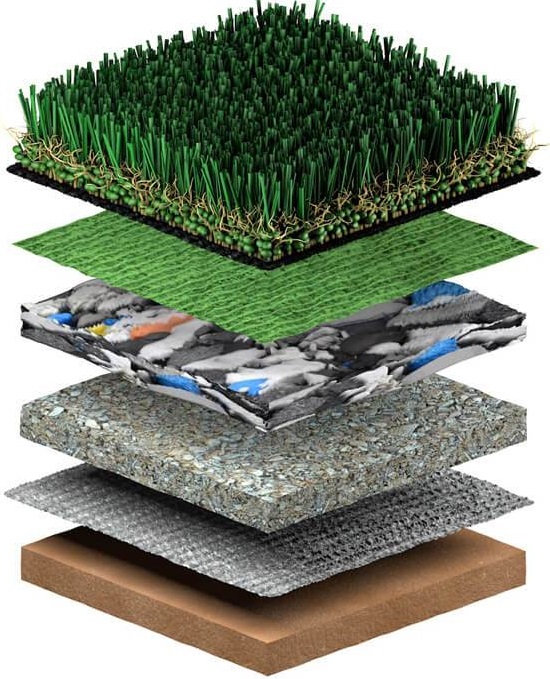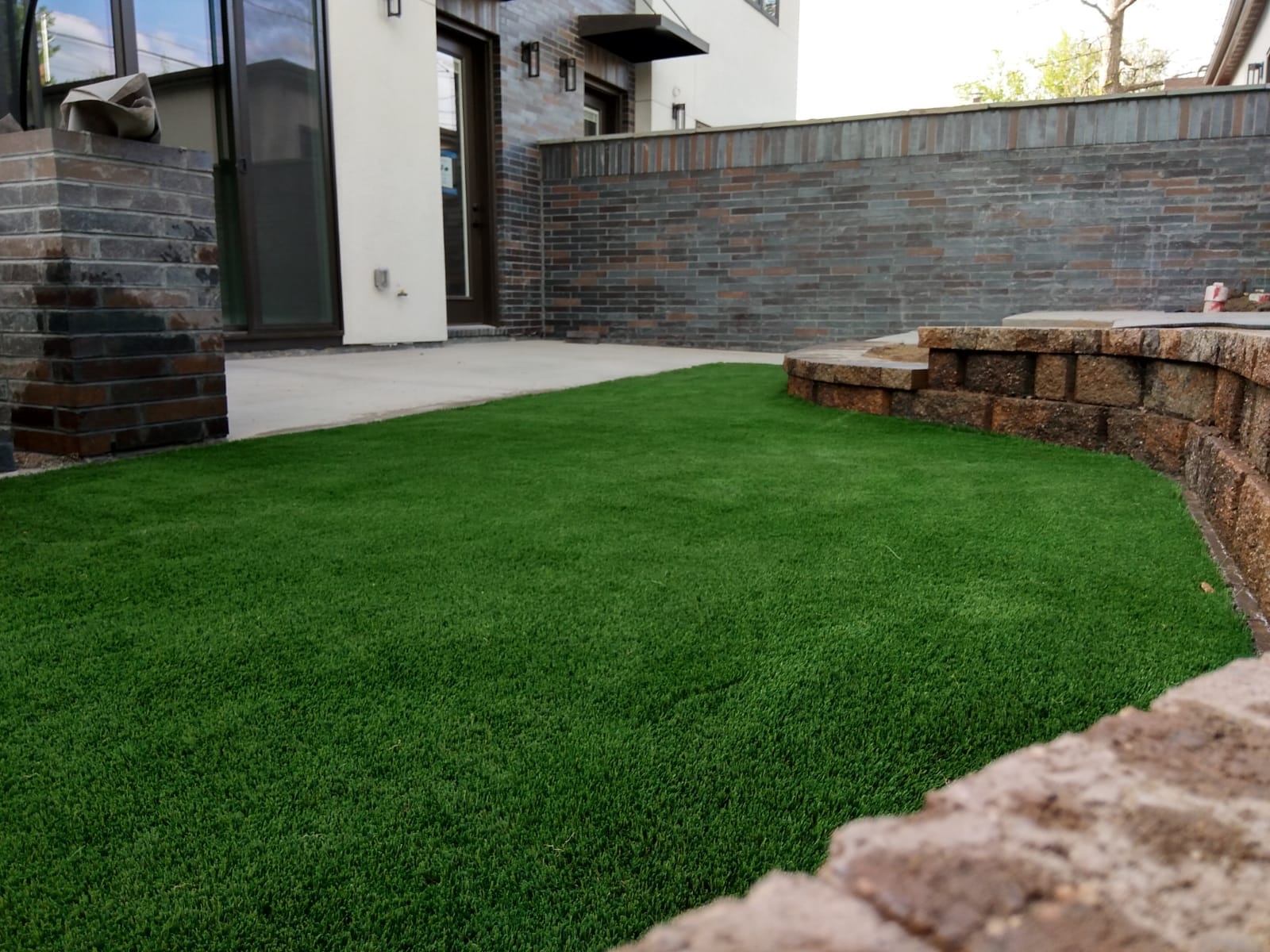High-Quality Artificial Grass Canoga Park Options for Every Yard
High-Quality Artificial Grass Canoga Park Options for Every Yard
Blog Article
Top Factors to Take Into Consideration Artificial Grass for a Low-Maintenance and lavish Backyard
As homeowners significantly look for lasting solutions for outside areas, man-made lawn provides an attractive alternative to traditional yards. Its capability to keep a dynamic look year-round without the burdens of watering, chemical, or mowing therapies makes it a useful selection for those intending to lower upkeep efforts. The ecological advantages, including significant water conservation and lowered dependence on chemicals, align with contemporary ecological values. However, the benefits expand beyond mere visual appeals and sustainability; discovering the multifaceted implications of man-made lawn discloses an extensive strategy to lawn monitoring that qualities much deeper consideration.
Year-Round Greenery
One of one of the most significant benefits of man-made yard is its capability to supply year-round greenery, despite climate problems. House owners often encounter obstacles in keeping a dynamic yard because of seasonal adjustments, droughts, or hefty rains. Synthetic grass gets rid of these worries, ensuring a regularly lavish appearance throughout the year.
This artificial choice is crafted to endure diverse climate situations, from sweltering summer warm to cold wintertime temperatures. Unlike natural turf, which might brown or become irregular during severe problems, synthetic grass preserves its vibrant color and appearance, enhancing the aesthetic appeal of any type of landscape.
Furthermore, man-made yard is resistant to bugs and conditions that generally influence natural lawns. This resilience adds to its long-lasting appeal, as there is no demand for chemical therapies or fertilizers that can be hazardous to the atmosphere. House owners can appreciate the visual advantages of a properly maintained grass without the intermittent challenges positioned by natural grass treatment.
Minimized Maintenance Efforts
Synthetic grass significantly minimizes upkeep efforts, allowing house owners to delight in a pristine lawn without the lengthy tasks related to all-natural turf treatment. Among one of the most significant benefits of synthetic lawn is the elimination of routine mowing. With no requirement for a lawnmower, home owners save both time and the expense of maintenance related to this tools.

Cleaning synthetic turf is uncomplicated; a straightforward rinse with a hose pipe or the occasional brushing to eliminate debris is normally adequate - artificial grass canoga park. This convenience of care enables house owners to spend more time appreciating their outside rooms as opposed to laboring over them. In recap, the reduced maintenance initiatives linked with man-made grass make it an enticing option for those seeking a gorgeous, convenient lawn
Water Preservation Conveniences
The substantial decrease in maintenance efforts associated with man-made lawn encompasses water conservation, making it an environmentally friendly choice for property owners. Conventional grass require substantial amounts of water to continue to be dynamic and lush, typically leading to extreme water usage, specifically in dry regions. In contrast, artificial lawn gets rid of the requirement for regular watering, dramatically decreasing the general water consumption in your backyard.
By choosing synthetic lawn, property owners can preserve countless gallons of water annually. This shift not only advantages specific homes yet likewise adds to broader ecological initiatives targeted at decreasing water waste. In locations experiencing water scarcity, the adoption of man-made yard can play a considerable role in reducing the impacts of drought and making certain that useful water resources are made use of a lot more successfully.
Additionally, the setup of fabricated turf can aid lower metropolitan water need, benefiting the area in its entirety. With growing understanding of environmental problems, picking fabricated grass functions as a positive action in the direction of sustainable landscaping, assisting to protect natural water resources while maintaining a visually pleasing outside space (artificial grass installation). In recap, synthetic turf offers an engaging solution for water conservation, lining up environmental duty with modern-day landscape design needs

Parasite and Allergy Reduction
A significant benefit of mounting artificial turf is its capability to reduce pests and allergens in exterior spaces. Traditional grass yards usually work as reproducing premises for bugs such as insects, ticks, and ants, which can develop pain and wellness dangers for pets and families. On the other hand, man-made lawn eliminates the natural material that draws in these pests, thus dramatically decreasing their populaces in your backyard.
In addition, natural yard can nurture mold and mildew, plant pollen, and other irritants, which can cause allergies and breathing problems for delicate individuals. Synthetic turf Visit This Link supplies a cleaner environment, lowering the potential for allergenic reactions. Unlike natural turf, synthetic grass does not generate pollen, making it an outstanding alternative for allergic reaction patients looking for to enjoy their exterior spaces without the risk of flare-ups.
In addition, the lack of dirt in synthetic grass suggests there is less dirt and dust, further lessening airborne allergens. This low-maintenance option not just boosts the visual charm of your yard but additionally advertises a healthier outside setting, enabling households to enjoy their grass without the constant concern of bugs and allergens. Therefore, artificial grass is a strategic selection for those focusing on comfort and health and wellness in their outdoor living rooms.
Long-Term Cost Cost Savings
Purchasing synthetic grass can lead to significant lasting expense financial savings for homeowners. While the first investment might seem significant, the monetary advantages in time can be considerable. Fabricated turf removes the demand for normal lawn maintenance costs, such as mowing, fertilizing, and watering. Traditional yards usually require considerable sources to keep a rich look, especially in areas vulnerable to visit the website drought or severe weather.
Additionally, the longevity of artificial grass even more improves its cost-effectiveness. Most premium synthetic yard products can last 15 to 25 years with very little upkeep, lowering the requirement for replacement or considerable repairs. In contrast, all-natural lawn might require regular reseeding and routine care, which can promptly include up in costs.
Energy savings are an additional important variable. House owners can expect to see reduced water bills, as synthetic turf does not need irrigation. Furthermore, the decrease in yard treatment solutions can liberate beneficial time and resources, permitting directory property owners to allocate their budgets elsewhere.
Final Thought
In summary, synthetic yard provides numerous benefits for property owners seeking a low-maintenance and dynamic landscape. Inevitably, the long-term cost savings linked with fabricated grass solidify its status as a sustainable and useful remedy for enhancing outdoor areas.
Man-made yard dramatically lowers maintenance initiatives, enabling property owners to enjoy a beautiful lawn without the time-consuming jobs connected with natural turf treatment.The considerable reduction in maintenance initiatives associated with man-made grass extends to water conservation, making it an environmentally pleasant option for homeowners. In comparison, man-made lawn gets rid of the demand for normal watering, dramatically decreasing the overall water consumption in your yard.
In areas experiencing water scarcity, the adoption of man-made yard can play a substantial role in minimizing the effects of drought and making certain that important water sources are utilized a lot more efficiently.
With growing understanding of environmental problems, choosing synthetic grass offers as a proactive step in the direction of lasting landscaping, helping to preserve natural water resources while keeping a cosmetically pleasing outside area.
Report this page